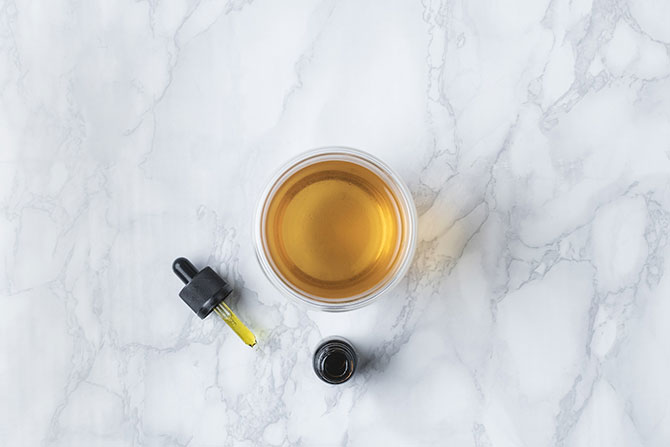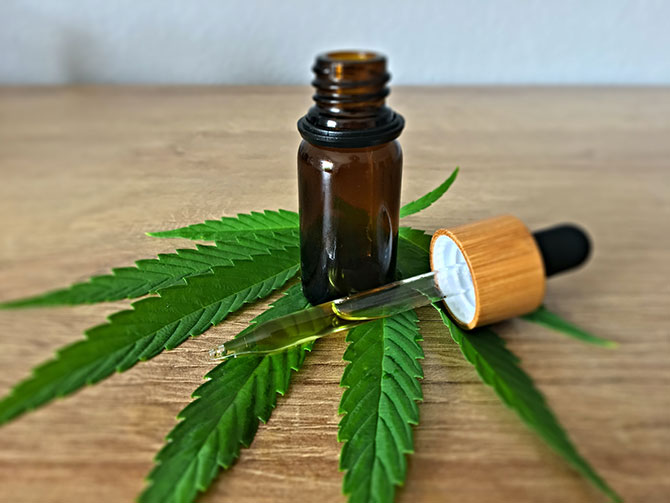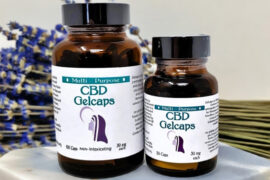Headaches, a seemingly universal human experience, are far more than just a commonplace nuisance. They represent a significant public health issue, impacting half of the population each year and wielding a hefty annual societal cost of around $14.4 billion due to decreased quality of life and disability. Migraines alone affect 10% of people, tension-type headaches afflict 38%, and relentless chronic pain is experienced by 3%. Intriguingly, women are 2-3 times more likely to suffer migraines and 1.25 times more prone to tension-type headaches than men.
These staggering statistics highlight the urgent need for effective treatment strategies. Stepping into this critical space is an ancient plant with a modern twist—cannabis. Let’s look more closely at how you can use cannabis for migraines and whether it is a safe choice.
How Does Cannabis Ease Migraine Pains
Cannabis is showing real promise in easing chronic migraine pain, and it all ties into our body’s endocannabinoid system (ECS). This system plays a crucial role in maintaining our body’s balance and actively manages the pain experienced during migraines.
The ECS is like a team of endocannabinoids, receptors, and enzymes, all working together to keep our bodies in harmony. A key player in this team is the cannabinoid receptor-1, which is quite abundant in the brain, spinal cord, and peripheral sensory neurons – the pathways where pain is felt.
Cannabis has many active compounds, but THC and CBD are the stars of the show. A study found that THC behaves much like our body’s natural endocannabinoids by binding to CB1 receptors, affecting how we perceive pain.
In a different way, CBD indirectly influences the ECS by blocking the enzyme fatty acid amide hydrolase, which is responsible for breaking down the endocannabinoid anandamide. When anandamide levels are higher, we tend to feel less pain.Furthermore, THC and CBD are known for their anti-inflammatory properties, which can help ease the inflammation linked to migraines, providing even more relief from the pain. While we still need more research on the relationship between cannabis and migraines to completely understand all the details of these processes, the current evidence is promising and suggests that cannabis could be a natural and effective treatment for migraines.
Is Cannabis Safe for Headache and Migraine Relief
Before we dive into the potential advantages of using medical cannabis for headache and migraine management, it’s imperative to address the issue of safety. Much like any treatment method, it’s vital to grasp the potential side effects and risks linked to its usage.
A review published in the Harm Reduction Journal provides insights into the potential adverse effects of cannabis for migraines, including symptoms such as dry mouth, fatigue, and short-term memory impairment. It’s worth noting that these side effects are typically considered mild and often diminish with continued use.
And while it’s evident that more in-depth research is needed to thoroughly understand the side effects of cannabinoids and ensure consumer safety, based on the current research, cannabinoids seem to present milder side effects for most individuals compared to traditional pain relievers.
In contrast to the more common pain medications often prescribed to migraine sufferers, such as non-steroidal anti-inflammatory drugs and opioids, which come with the risk of severe side effects like heart problems and organ damage, cannabinoids offer a more promising and natural alternative.
Also, medicinal cannabis can be a great way to avoid medication overuse headache, which is caused by overusing traditional migraine medications and is a common issue for those dealing with chronic migraines and headache disorders.
That being said, when considering the use of cannabinoids for relieving headaches and migraines, it’s essential to approach this option with care. Seeking guidance from a healthcare provider is highly advisable. Their expertise can ensure that the treatment is tailored to meet your unique needs and situation.Finally, it’s important to recognize that the method of cannabis administration can impact safety. Smoking or vaping, for instance, may pose risks to your respiratory system. To address this concern, many medical cannabis users opt for alternative oral consumption methods, such as CBD oils, tinctures, or edibles.
Benefits of Using Cannabis for Headaches and Migraines
Cannabis demonstrates potential as a treatment for migraines and common headaches, providing fast relief, effective management of a wide range of migraine symptoms, preventive benefits, and the ability to tailor treatment to individual needs. However, like any treatment option, it’s crucial to have a discussion with a healthcare provider to determine its suitability for your unique situation.
Quick Onset of Relief
One significant advantage of using cannabis to ease headaches and chronic migraine is how quickly it can provide relief. A study led by Carrie Cuttler, a Washington State University assistant professor of psychology, found that inhaled cannabis reduced self-reported headache pain severity and migraine severity by close to 50%. This swift relief can be a game-changer for individuals grappling with persistent and incapacitating migraine headaches.
Preventative Benefit
Beyond providing relief, cannabis seems to offer a preventive advantage by potentially reducing migraine and headache frequency. A study revealed that more than half of the participants reported fewer migraines when using cannabis. The study also underscored that cannabis might positively influence the severity and duration of migraine episodes. These findings indicate that cannabis could hold promise as an alternative approach for individuals looking to better manage migraines and enhance their overall quality of life.
Versatile Personalized Treatment
The versatility of cannabis allows for personalized options for treating migraine attacks. It can be consumed in various forms—smoked, vaped, eaten, or taken sublingually—enabling individuals to find the method that works best for them. This also enables titration, or the ability to adjust the dose to obtain the desired relief with minimal side effects.

How to Choose the Right Products
Selecting the right cannabis product for headache or migraine relief can seem overwhelming due to the vast array of options available on the market. However, keeping a few key considerations in mind can simplify this process.
Understand Your Needs
To begin, it’s essential to understand your specific needs. Are you looking for fast relief during a severe migraine episode, or are you in search of a preventative approach to decrease the migraine frequency? The responses to these questions can help you determine the most appropriate product for your situation.
CBD Products: Oils vs. Topicals
Migraines vary in frequency and intensity and successful dosage is something that must be sought and found. Most people take some form of ingested CBD in a daily morning dose (say 10 mg) to prevent migraines, but that same person may require 50 mg of CBD to make a migraine go away.
CBD in topical salve applied to the temples or the back of the neck or the forehead is a process that some report success with in preventing migraines. People suffering with full-on migraines have reported finding immediate relief by using the topical salve as suggested, combined with ingesting the oils.
Note that not all CBD products are created equally, so it is important to look for a topical that has ingredients that help with absorption like olive oil, calendula, vitamin E oil.
Topicals are often discounted by people, but the fact of the matter is that when someone ingests CBD, it must go through the liver and the person taking it is lucky if ten percent of the medicine makes its way to the affected part of the body. Topicals, with ingredients for absorption, keep ninety percent of the medicine local. That is why more people with migraines are incorporating the topical into their preventive routine. One young man who suffered chronic migraines for most of his teen years and into his adult years was amazed that he could prevent his migraines by putting the CBD topical dab behind each ear every morning. Others have found their solution by combining topicals with ingested oil.
Finding one’s perfect dose is a journey. Persistence pays off in pain relief.
Method of Consumption
The method of consumption is another important factor to consider. Oral methods like tinctures, edibles, or oils are safer for the respiratory system but may take longer to kick in. Topicals, on the other hand, can be applied directly to the temples and may bring localized relief.
Lab Testing
Always opt for products that have been lab-tested for quality and safety. Reputable companies will provide Certificates of Analysis (COAs), verifying that the product contains the advertised amount of cannabinoids and is free from harmful contaminants.

Does Cannabis Help Migraines and Common Headaches: Conclusion
The use of cannabis for migraines and headaches is emerging as a promising alternative to conventional pain relievers. It presents advantages like swift relief, comprehensive symptom control, preventive potential, and customizable migraine treatment options. At Sisters of the Valley, we offer a range of all-natural, safe, and non-addictive cannabis products that can help provide efficient acute migraine treatment. Our CBD is extracted naturally, ensuring low THC content, making our products safe and organic. Adhering to our patent-pending moon cycle medicine-making process, we ensure that the extraction and production processes retain the maximum amount of medical compounds from the plant. Our dedication to quality, safety, and efficacy is unwavering, ensuring that you can confidently use our products for your wellness needs.









Comments are closed.